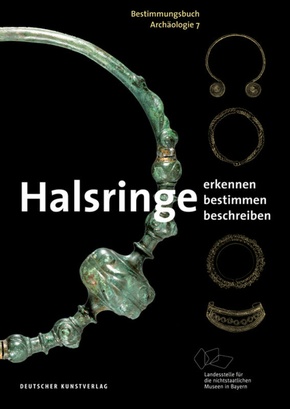| Verlag | Deutscher Kunstverlag |
| Auflage | 2021 |
| Seiten | 208 |
| Format | 17,3 x 1,7 x 24,5 cm |
| Großformatiges Paperback. Klappenbroschur | |
| Gewicht | 596 g |
| Reihe | Bestimmungsbuch Archäologie 7 |
| ISBN-10 | 3422982868 |
| ISBN-13 | 9783422982864 |
| Bestell-Nr | 42298286A |
Zu den prachtvollsten Gattungen archäologischer Funde gehören die Halsringe. Sie bestehen aus Bronze, Silber oder Gold, sind aufwendig hergestellt und reich verziert. In der Vorzeit wurden sie von ausgewählten Männern, Frauen und Kindern getragen, repräsentierten Stand und Würde des Trägers und zeichneten ihn innerhalb seiner Gesellschaft aus.
In Mitteleuropa gibt es Halsringe seit dem Beginn der Bronzezeit um 2200 v. Chr. Sie kommen bis in die Völkerwanderungszeit um 500 n. Chr. vor, bei den Ostseeanrainern sogar noch bis in das 10. und 11. Jahrhundert.
Im vorliegenden Band 7 der Reihe Bestimmungsbuch Archäologie werden die einzelnen typischen Formen vorgestellt, beschrieben und abgebildet. Dazu kommen Angaben zur Datierung und Verbreitung der Formen sowie weiterführende Informationen.
Neck rings are among the most magnificent genres among archeological finds. They are made of bronze, silver, or gold, elaborately produced, and richly ornamented. In prehistoric times, they were worn by selected men, women, and children, represented the status and dignity of the wearer, and distinguished the individual within his or her society.
In Central Europe, there are neck rings starting from the beginning of the Bronze Age around 2200 BCE. They are found up to the Migration Period around 500 CE, and in the case of the inhabitants near the Baltic Sea even until into the tenth and eleventh century.
This book present, describes, and portrays the typical individual forms. It also provides information about the dating and distribution of the forms as well as additional details.

